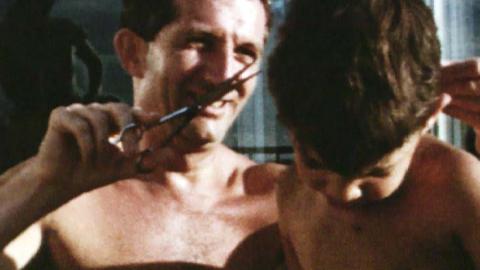
First Internet Film
Philippe Mora's Richard III: the World's first internet film
Despite its relatively short history, it’s hard to imagine that the internet had a beginning and a list of first times. The first releases and broadcasts of recorded sound, cinema, radio and television – those previous disseminators of popular culture, education and information that came before online platforms – have become iconic, and the ‘firsts’ of the internet can, should and will take their place amongst their predecessors.
Philippe Mora’s Richard III was acknowledged by Apple at the moment of broadcast in 1996 as being the first film made for and broadcast on the internet as part of a program they had initiated. That the film should survive almost two decades when so much of the internet’s content is lost on a daily basis is astonishing. That it should surface just as the world’s film industry, its production, distribution and exhibition has almost moved wholly to the digital realm is opportune. And we can’t help noticing Mora’s prophetic words (download the PDF below) where he presages this move by the mainstream film studios with their ‘elephant feet’. The film is a marker, a turning point in the world’s film and cinema history, a point from which there has been much advancement, and from which we can now see from where we have come.
For a film archive the challenge is to collect, preserve and make accessible films regardless of their original format, and ensuring the film’s original intention and integrity is paramount. What is obvious is that the challenges we face with any analogue format, film or video, are still as important in the digital world. Digital files are just as fragile as other film formats, perhaps more so as a zero or one out of place can cause the film to be transformed into something else. It’s important to ensure that every pixel is accounted for so we can continue to watch the film.
Richard III was produced on Betacam SP, a well known format able to be preserved but not without its problems. The film, 58 minutes long, was transferred to MPEG (this is the first MPEG, not MPEG 2 or MPEG4 or JPEG2000 or any of the other myriad of digital encoding types) to be loaded up or down through a dial-up modem – a buffering nightmare by today’s standards and an endurance test for audiences.
Although we have a transcript of the online chat that accompanied the screening it would be wonderful to know who was watching, where they were and what they thought. Did they find significance in the fact that this ‘first’ of the digital age is one of the regularly still performed plays by 16th century playwright William Shakespeare, or did they ponder the parallels between the timing of the screening and the beginning of the concept of the cinema a tad over a century earlier in 1895-96? Questions which can’t be answered in a blog but as the history of the internet unfolds can perhaps be considered for another time. Now it’s time to see what Grumpy Cat has been up to…
Download: Richard III - Apple chat transcript 1996
The National Film and Sound Archive of Australia acknowledges Australia’s Aboriginal and Torres Strait Islander peoples as the Traditional Custodians of the land on which we work and live and gives respect to their Elders both past and present.

